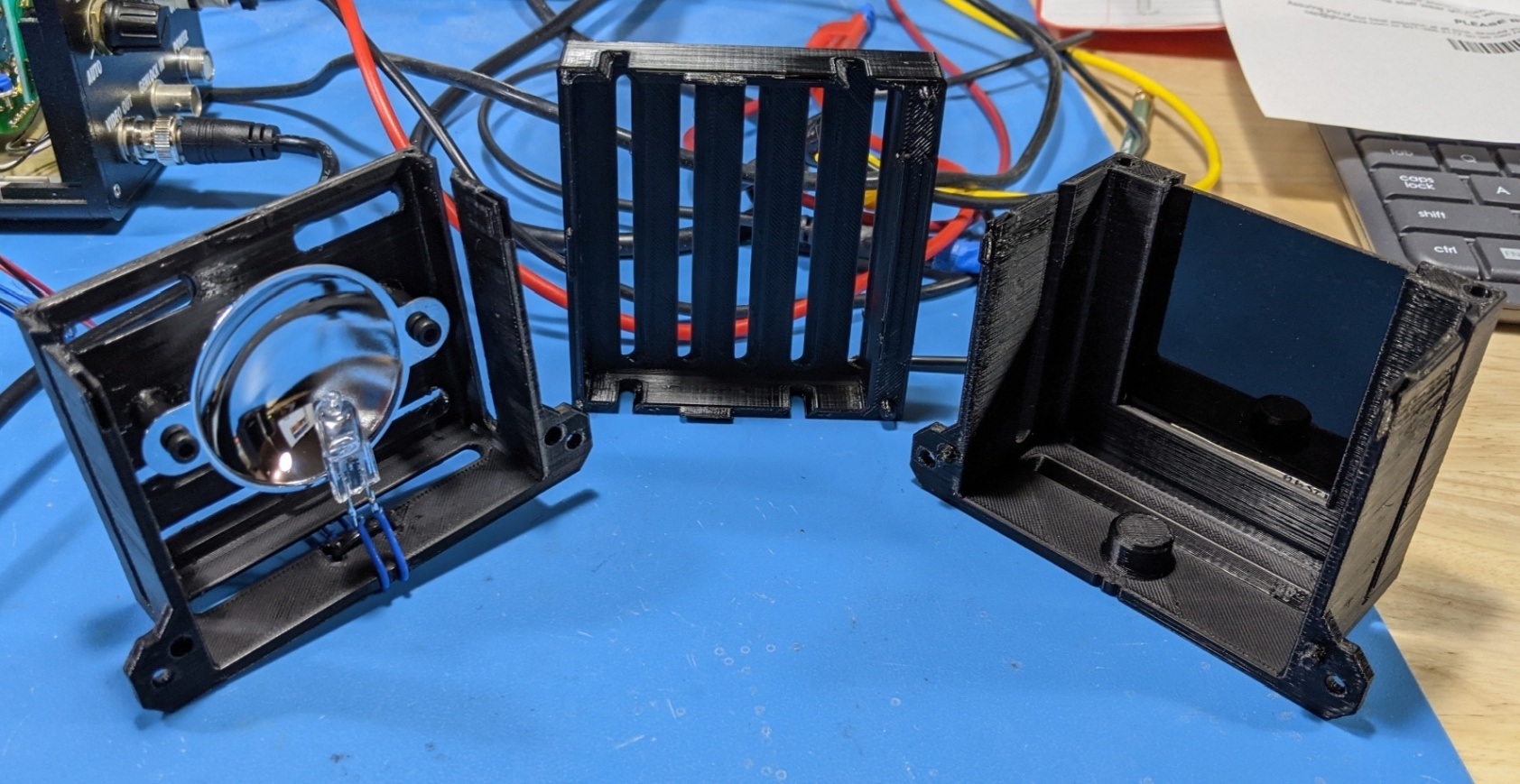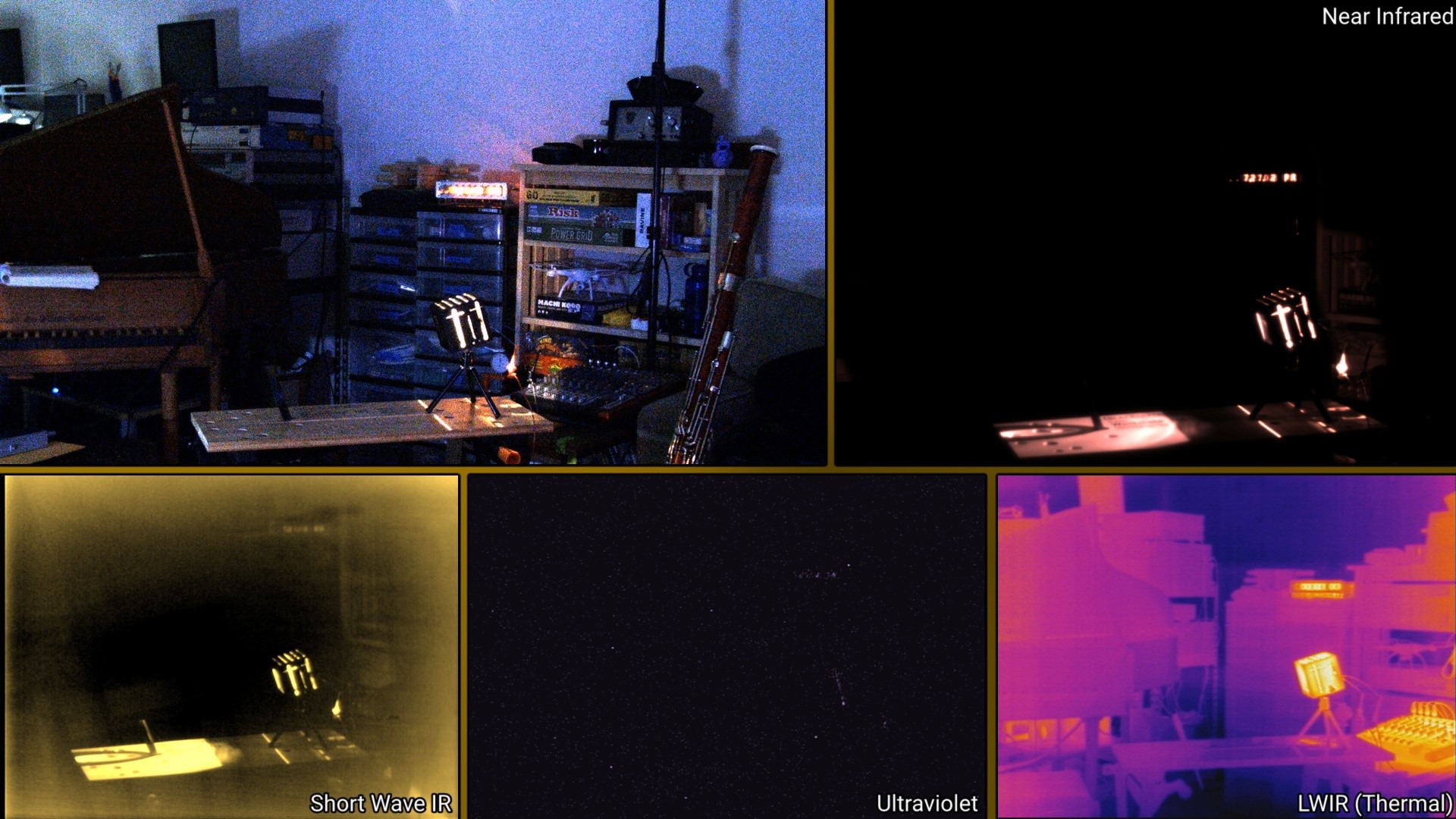This forum has seen some SWIR and NIR threads, so I assume this is the best place to put it. I designed a printable lamp housing for a reasonable power selectable band source made from a printed box, a tungsten halogen lamp, a longpass filter, and it seems to work well. The box is sized and designed around a 10W, 12V halogen lamp - the heat output of halogens is high, so there are lots of ventilation slots, but they angle away from the front face with the filter, so a minimal amount of visible/out of band light will show on the front face target. I used some reflectors found on ebay, but there is probably a good variety that will work, and reasonable gauge solid core wire makes for a reliable lamp mount that can be bent to focus against the reflector in back. The optical filter can be selected for usage (a tungsten halogen lamp is a very broadband source), and is a standard 50x50x2.5mm size (2" square) that is often available on the used market.
https://www.thingiverse.com/thing:4758234
For the pictured box, I used a 2800k halogen lamp (lower color temperature means a larger portion of the total emission below the visible band), a reflector off ebay, and a Schott RG1000 filter (1000nm longpass). The filter will likely be the majority of the cost of the whole thing. I screwed on the reflector with M3 machine screws and nylon spacers, then I stripped the solid core wire and bent it approximately in place, securing in two places with zip ties, so that I could solder the lamp in place to the wires. Then I made sure to clean the lamp with isopropyl alcohol, slid the filter into the front slot, and pressed the two lower halves together. A couple of nuts and bolts, one on either side of the bottom, help keep the press fit parts hold the wires in place better, then you press fit the top piece on it. The bottom has a 1/4" 20 TPI thread built in for a standard camera threaded mount.

(the room is much darker than the high gain of the visible camera makes it look)
The results are good! You get stripes of unfiltered light facing to the side and back, but looking at the face of the light you only get what comes through the filter, I've got a set of cameras setup for multiband visualization and you can see that the RG1000 passes as expected - the NIR camera can see it in its reduced sensitivity region (sensitive to about 1150nm, I figure), whereas the SWIR camera sees a bright light. You can see a tiny bit of UV through the slots, but I think being low color temperature and probably a standard glass lamp (rather than quartz glass), there is little UV emitted by the lamp used.
http://medpants.com/ee/SWIR%20Source%20SWIR%20only.jpg(the plastic magnifying glass passes SWIR just fine!)